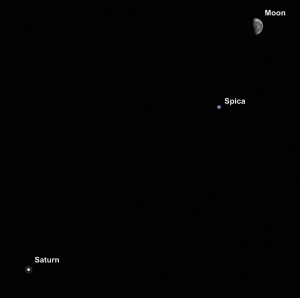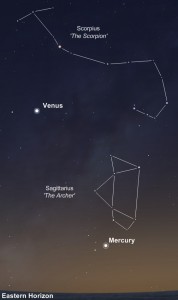If you are an early riser, you might like to look skywards on Australia Day (26 January 2011) for the chance to see three planets without a telescope.

Saturn (which appears to the unaided eye as a pale yellow star) will be located to the left of and below the Moon. If you have even a small telescope, take the trouble to look at Saturn as you will be able to easily see its ring system. The bright star in between the Moon and Saturn is Spica, the brightest star in the ancient Greek constellation Virgo The Virgin.

Once you have had a look at Saturn, face East and and you will be able to two bright stars that won’t be marked on star charts. The top and brightest extra star is Venus and the bottom is Mercury. Mercury moves towards the Sun early next month and becomes unobservable as it goes behind the Sun (as seen from the Earth) on 25 February 2011.
Note that the findercharts have been prepared for the start of morning twilight by all Australian East Coast residents. You will find that your location will determine what time you need to look. The further South you are in Australia, the earlier twilight occurs, and therefore the earlier you will need to look.